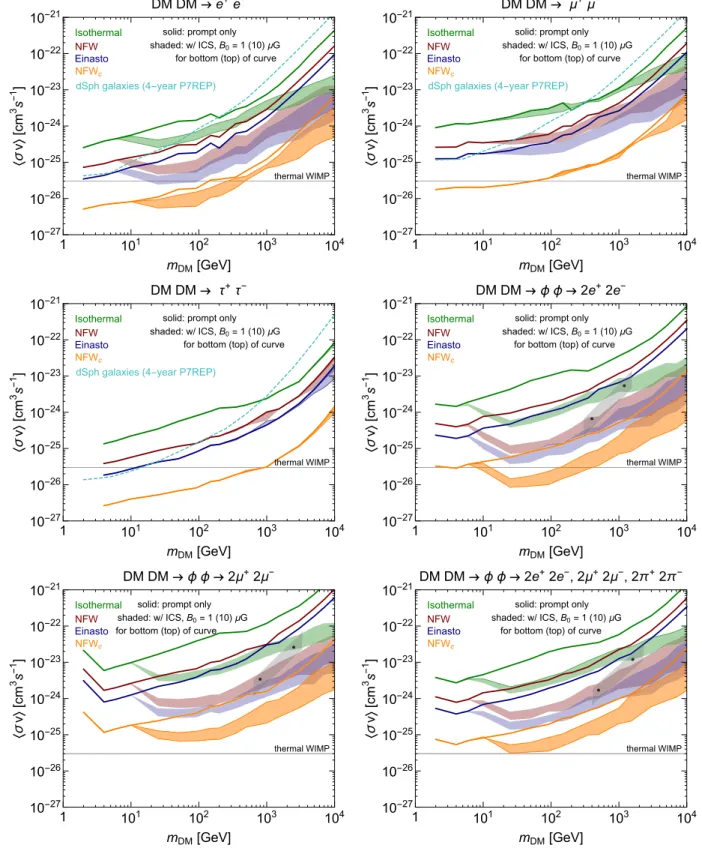Strong optimized conservative Fermi LAT constraints on dark matter models from the inclusive photon spectrum
Texto completo
Figure




Documento similar
Using the latest data from the Fermi-LAT satellite (the most sensitive instrument for this type of searches) we extract constraints on the annihilation cross section of dark
We derive constraints on parameters of generic dark matter candidates by comparing theoretical predictions with the gamma-ray emission observed by the Fermi-LAT from the region
Astrometric and photometric star cata- logues derived from the ESA HIPPARCOS Space Astrometry Mission.
The photometry of the 236 238 objects detected in the reference images was grouped into the reference catalog (Table 3) 5 , which contains the object identifier, the right
In addition to traffic and noise exposure data, the calculation method requires the following inputs: noise costs per day per person exposed to road traffic
3.2 DM relic density: the role of EW symmetry breaking & thermal masses 7 3.3 Super-WIMP contribution to the DM relic abundance 11 4 Constraints on Dark Matter freeze-in
For the calculation of limits (see section 6), the number of observed events in data and expected signal remain the same, while the expected background is modified to correct for
The simulated invariant mass spectrum was normalized to the data using the number of events in the mass interval 60–120 GeV.. The shape of this spectrum can be modified by

